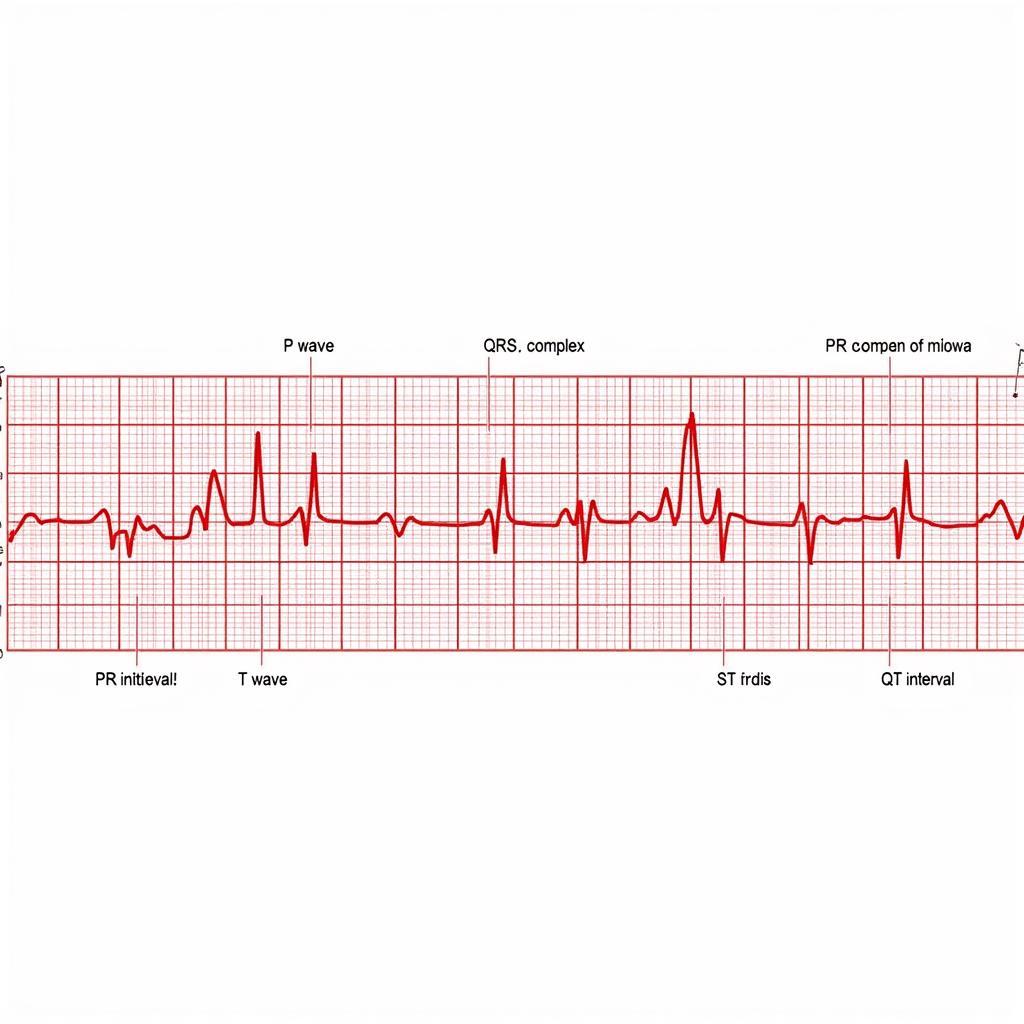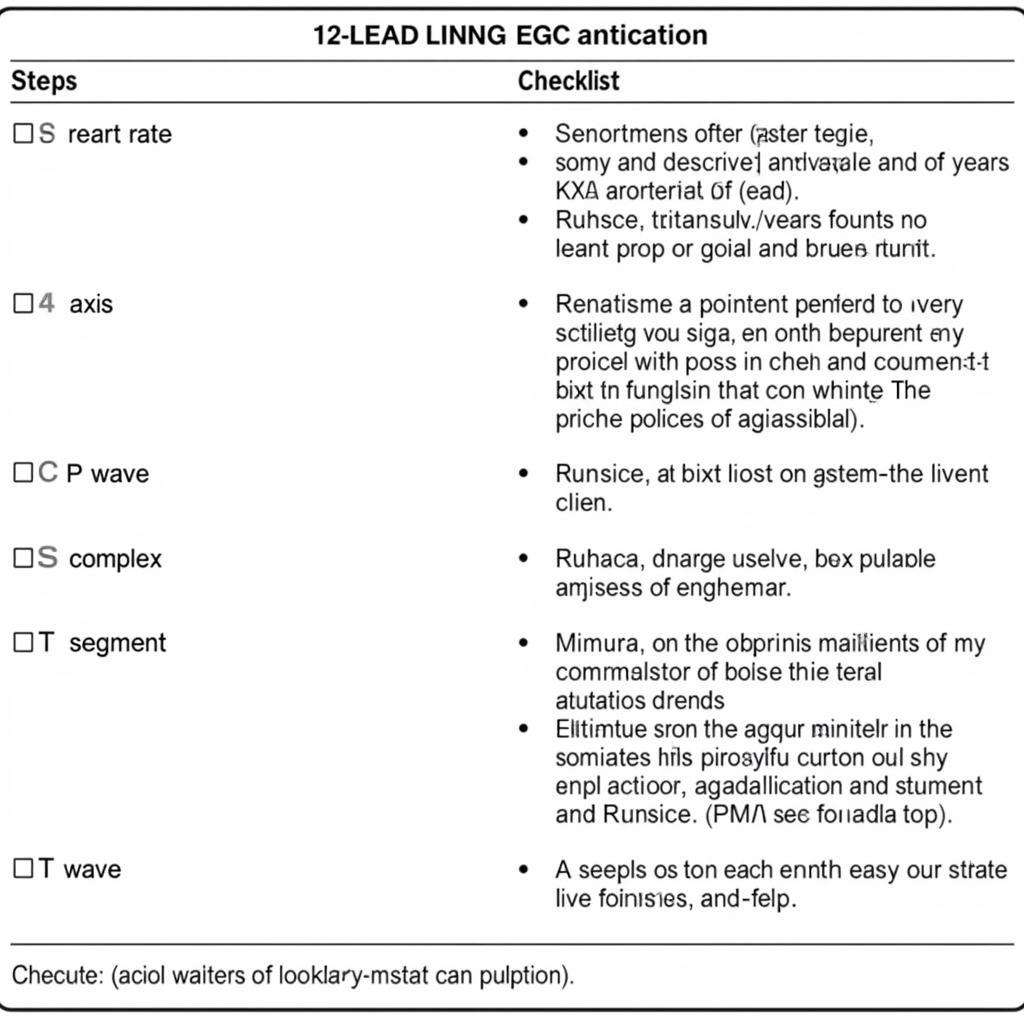Mastering the Art of 12-Lead ECG Interpretation
The art of 12-lead ECG interpretation is a crucial skill for healthcare professionals. Understanding the complexities of an ECG can be the difference between life and death, enabling accurate diagnosis and timely intervention for various cardiac conditions. This comprehensive guide will delve into the intricacies of 12-lead ECG analysis, providing valuable insights and practical tips to enhance your interpretative skills.
Understanding the Basics of 12-Lead ECGs
A 12-lead ECG provides a comprehensive view of the heart’s electrical activity from different angles. This multifaceted perspective allows for the detection of subtle abnormalities that might be missed with fewer leads. Each lead represents a specific view of the heart, capturing the electrical impulses as they travel through the cardiac tissue. By analyzing the waveforms, segments, and intervals within each lead, we can gain a deep understanding of the heart’s rhythm, conduction system, and potential underlying pathologies.
The 12-lead ECG consists of limb leads (I, II, III, aVR, aVL, aVF) and precordial leads (V1-V6). Limb leads provide a frontal plane view of the heart, while precordial leads offer a horizontal plane perspective. Together, these leads create a comprehensive electrical picture of the heart.
The Art of 12-Lead ECG Interpretation: Identifying Key Components
Interpreting a 12-lead ECG involves a systematic approach, focusing on key components such as heart rate, rhythm, axis, P waves, QRS complex, ST segment, and T waves. Each component provides valuable information about the heart’s electrical activity. For example, the P wave represents atrial depolarization, while the QRS complex signifies ventricular depolarization.
Analyzing the ST segment is crucial for detecting myocardial ischemia or infarction. Elevations or depressions in the ST segment can indicate acute coronary syndromes requiring immediate intervention. Similarly, T wave abnormalities can suggest electrolyte imbalances or myocardial ischemia.
 ECG Waveform Analysis and Key Components
ECG Waveform Analysis and Key Components
Advanced Techniques in 12-Lead ECG Interpretation
Beyond the basics, mastering the art of 12-lead ECG interpretation involves recognizing complex arrhythmias, bundle branch blocks, and other conduction abnormalities. These conditions can manifest as subtle variations in the ECG waveforms, requiring careful analysis and expertise to diagnose accurately.
For example, a right bundle branch block (RBBB) is characterized by a widened QRS complex and a characteristic “rabbit ear” pattern in leads V1 and V2. Similarly, a left bundle branch block (LBBB) presents with a widened QRS complex and notched R waves in leads V5 and V6. Differentiating between these conditions is crucial for appropriate management.
“A deep understanding of the underlying physiology is essential for accurate 12-lead ECG interpretation,” explains Dr. Emily Carter, a leading cardiologist at the Heart Institute. “It’s not just about recognizing patterns, but also understanding the electrical events that generate those patterns.”
Putting it All Together: A Systematic Approach
To master the art of 12-lead ECG interpretation, follow a systematic approach. Start by assessing the heart rate and rhythm. Then, analyze the axis, P waves, QRS complex, ST segment, and T waves. Look for any abnormalities or deviations from the norm. Finally, correlate your findings with the patient’s clinical presentation to arrive at an accurate diagnosis.
12-lead ecg the art of interpretation
 ECG Interpretation Checklist
ECG Interpretation Checklist
“Practice is key to developing proficiency in ECG interpretation,” adds Dr. David Miller, a renowned electrophysiologist. “The more ECGs you analyze, the more comfortable you’ll become with recognizing different patterns and abnormalities.”
12-lead ecg the art of interpretation
Conclusion
The art of 12-lead ECG interpretation is a continuous journey of learning and refinement. By embracing a systematic approach, staying updated with the latest advancements, and dedicating time to practice, you can enhance your interpretative skills and contribute to improved patient care. Mastering the art of 12-lead ECG interpretation is essential for accurate diagnosis and effective management of various cardiac conditions.
12-lead ecg the art of interpretation
FAQ
- What are the different types of ECG leads?
- How can I calculate the heart rate from an ECG?
- What are the common causes of ST segment elevation?
- What is the difference between a RBBB and a LBBB?
- What are some resources for learning more about ECG interpretation?
- How do I interpret a normal sinus rhythm on an ECG?
- What are the clinical implications of an abnormal ECG?
Contact Us: For further assistance, contact us at Phone: 02462573573, Email: danteum@gmail.com or visit us at Savico Megamall, 7-9 Nguyen Van Linh Street, Gia Thuy Ward, Long Bien District, Hanoi 10000, Vietnam. We offer 24/7 customer support.


